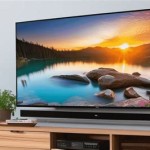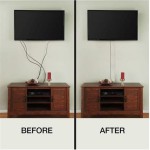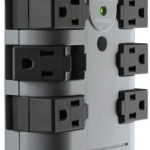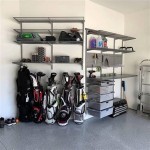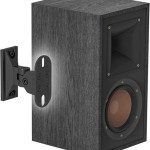Wall Mounted Pot Filler Faucet: A Comprehensive Guide
The kitchen, often considered the heart of the home, is a space where functionality and aesthetics converge. A crucial element in achieving both is the choice of fixtures, including faucets. Among the various types of faucets available, the wall-mounted pot filler faucet stands out for its unique design and practical benefits. This article aims to provide a comprehensive overview of wall-mounted pot filler faucets, covering their functionality, installation considerations, advantages, disadvantages, and factors to consider when selecting one.
A wall-mounted pot filler faucet, as the name suggests, is a faucet installed directly onto the wall above the stove. Unlike traditionally mounted faucets located at the sink, a pot filler's primary purpose is to fill large pots with water directly on the cooktop. This eliminates the need to carry heavy, water-filled pots from the sink to the stove, reducing the risk of spills and strain. They typically feature a double-jointed or articulating arm, allowing the faucet to extend over all burners of the stove and fold away neatly when not in use.
Enhanced Convenience and Ergonomics
The primary advantage of a wall-mounted pot filler faucet lies in the sheer convenience it provides. Lifting and transporting heavy pots filled with water can be a physically taxing task. A pot filler eliminates this burden, saving both time and effort. This is particularly beneficial for individuals with mobility limitations or back problems, making the cooking process more accessible and enjoyable. The ergonomic design reduces strain and minimizes the risk of spills and injuries associated with carrying heavy pots across the kitchen.
Furthermore, the strategic placement of the pot filler directly above the cooktop streamlines the cooking process. Chefs and home cooks alike can easily add water to sauces, soups, and pasta without having to move the pot from the burner. This efficiency allows for better control over cooking temperatures and reduces the potential for interruptions during critical stages of meal preparation.
The articulating arm design provides flexibility and reach, allowing the user to position the faucet precisely where needed. This adaptability ensures that even large or awkwardly shaped pots can be filled with ease. When not in use, the faucet can be folded back against the wall, minimizing its footprint and maintaining a clean and uncluttered appearance.
Installation Considerations and Plumbing Requirements
Installing a wall-mounted pot filler faucet is not a simple DIY project and typically requires professional plumbing expertise. The faucet needs to be connected to a dedicated water line within the wall. This means that if a water supply is not already present at the desired location, new plumbing lines need to be installed. This process can involve opening up the wall, running pipes, and ensuring proper connections to the existing plumbing system.
Before installation, it is crucial to consider the wall structure and material. The wall needs to be sturdy enough to support the weight of the faucet and the water flowing through it. Reinforcements might be necessary, especially if the wall is made of drywall or other less robust materials. The height of the faucet above the cooktop is another critical factor. It should be high enough to accommodate tall pots but not so high that it causes splashing or awkward handling. A typical installation height ranges from 12 to 18 inches above the cooktop surface.
Additionally, a licensed plumber must ensure that the water line is properly sealed to prevent leaks. Any leaks within the wall can cause significant damage, including mold growth and structural issues. It is also important to comply with local plumbing codes and regulations, which may vary depending on the jurisdiction. Failure to adhere to these codes can result in fines or require rework to bring the installation into compliance.
Accessibility to shut-off valves is another important consideration. A dedicated shut-off valve should be installed along the water line supplying the pot filler. This allows for easy shut-off in case of leaks or repairs without having to turn off the entire water supply to the house. The shut-off valve should be easily accessible for maintenance and emergency situations.
Design and Aesthetic Considerations
Beyond functionality, a wall-mounted pot filler faucet can also enhance the overall design aesthetic of the kitchen. These faucets are available in a wide range of styles, finishes, and designs to complement various kitchen decors. From sleek and modern chrome finishes to rustic and traditional bronze options, there is a pot filler to suit every taste and preference.
The faucet's finish should coordinate with other kitchen fixtures, such as the sink faucet, cabinet hardware, and appliances. Consistency in finish creates a cohesive and visually appealing look. Consider the overall style of the kitchen when selecting a pot filler. A minimalist kitchen might benefit from a streamlined and understated design, while a more traditional kitchen could accommodate a more ornate and decorative model.
The articulating arm design also contributes to the faucet's aesthetic appeal. Some models feature a single joint, while others have two or more, providing greater flexibility and visual interest. The shape and curvature of the arm can also influence the overall aesthetic. Choose a design that complements the kitchen's architecture and creates a focal point above the cooktop.
The placement of the faucet can also impact its visual impact. Consider the symmetry and balance of the surrounding elements when determining the optimal location. A well-placed pot filler can become a statement piece, adding a touch of elegance and sophistication to the kitchen.
Potential Drawbacks and Alternatives
While wall-mounted pot filler faucets offer numerous benefits, it is essential to acknowledge their potential drawbacks. One of the main disadvantages is the cost of installation. As previously mentioned, installing a pot filler typically requires professional plumbing services, which can be expensive, especially if new water lines need to be run. The overall cost can vary depending on the complexity of the installation and the local labor rates.
Another potential drawback is the limited functionality compared to a traditional sink faucet. Pot fillers are primarily designed for filling pots with water and are not suitable for washing dishes or performing other kitchen tasks. Therefore, a separate sink faucet is still necessary. This means that homeowners need to consider whether the added convenience of a pot filler justifies the additional cost and space requirements.
Furthermore, some homeowners may find that they do not use the pot filler as frequently as they initially anticipated. This can be due to various factors, such as changes in cooking habits or the inconvenience of cleaning around the faucet. If the pot filler is rarely used, it may not be a worthwhile investment. Before committing to the installation, it is crucial to assess one's cooking habits and determine whether a pot filler aligns with their needs and lifestyle.
As an alternative, some homeowners opt for portable pot fillers. These are essentially countertop water dispensers that can be placed near the stove. While they may not offer the same level of convenience as a wall-mounted pot filler, they are a less expensive and easier-to-install option. Portable pot fillers can be a suitable choice for those who want the convenience of filling pots near the stove without the commitment of a permanent installation.
Another alternative is to simply rely on a traditional sink faucet. While this requires carrying pots of water from the sink to the stove, it eliminates the need for a separate pot filler and its associated costs and installation requirements. For homeowners who do not cook frequently or who are comfortable carrying pots of water, a traditional sink faucet may be a perfectly adequate solution.
Factors to Consider When Selecting a Pot Filler Faucet
When selecting a wall-mounted pot filler faucet, several factors should be taken into consideration to ensure that the chosen model meets the specific needs and preferences of the homeowner. These factors include the faucet's material, finish, design, reach, water flow rate, and warranty.
The material of the faucet is an important consideration, as it affects its durability and longevity. Brass is a common material choice for faucets due to its resistance to corrosion and its ability to withstand high water pressure. Stainless steel is another durable option that is also resistant to rust and staining. Avoid faucets made of lower-quality materials, as they may be prone to leaks and other issues.
The finish of the faucet should complement the overall design of the kitchen. Common finishes include chrome, brushed nickel, stainless steel, bronze, and black. Choose a finish that is durable and easy to clean. Some finishes are more prone to fingerprints and water spots than others, so consider this when making a selection.
The design of the faucet should align with the kitchen's style. Choose a design that is both aesthetically pleasing and functional. Consider the shape and curvature of the articulating arm and the overall proportions of the faucet.
The reach of the faucet is crucial to ensure that it can extend over all burners of the stove. Measure the distance from the wall to the furthest burner and choose a faucet with a reach that is slightly longer than this measurement. This will ensure that the faucet can easily fill pots on all burners.
The water flow rate of the faucet should be adequate to fill pots quickly and efficiently. A higher flow rate will fill pots faster, but it may also lead to splashing. Choose a faucet with a flow rate that is appropriate for the size of the pots that you typically use.
Finally, consider the warranty offered by the manufacturer. A longer warranty indicates that the manufacturer has confidence in the quality and durability of their product. Read the warranty carefully to understand what is covered and what is not.
By considering these factors, homeowners can select a wall-mounted pot filler faucet that is both functional and aesthetically pleasing, enhancing the convenience and style of their kitchen.

Mondawe Brushed Nickel Double Handle Wall Mount Pot Filler Kitchen Faucet In The Faucets Department At Com

Why You Need A Pot Filler Faucet Delta Blog

Blair Lever Handle Wall Mount Pot Filler Rejuvenation
Akicon Wall Mounted Pot Filler Faucet In Copper Ak288c The Home

Traditional Wall Mount Pot Filler In Arctic Stainless 1177lf Ar Delta Faucet

Delta Wall Mount Pot Filler Faucet Traditional Consolidated Plumbing Supply

Giving Tree Vintage Design Wall Mount Pot Filler Faucet With Two Handle Kitchen In Matte Black Btdtu8045hdrb01 The Home

Wall Mount Pot Filler Faucet Oil Rubbed Bronze Kitchen Swing Arm Folding 710185492025

Traditional Wall Mount Pot Filler Faucet Lever Handle Sinks Gallery

Modern Retractable Wall Mounted Pot Filler Matte Black Kitchen Faucet With Spray Homary

